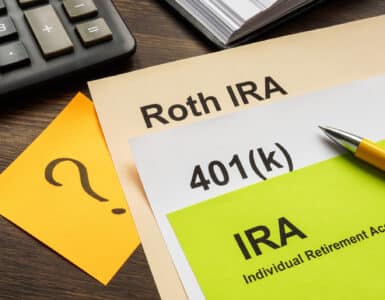None of us are getting any younger. And life likely won’t get cheaper. This is why it’s a good idea to check in on your retirement plan at least once a year to make sure everything is where it needs to be – you’re saving enough and your investment portfolio is balanced, among other things.
Since the pandemic upended so many aspects of our lives – then inflation socked it to us again – many people who retired in the last few years have found their money isn’t going as far as they hoped it would. A 2022 Spending in Retirement Survey from the Employee Benefit Research Institute (EBRI) found:
-
27% of retirees said their spending was much higher or a little higher than they could afford in 2022.
-
17% of retirees polled in 2020 gave similar answers when the same spending question was asked.
-
90% of the 2,000 U.S. retirees polled who began spending less on essentials or discretionary items since the pandemic in 2020, said the most common reason they changed their money habits was because of inflation.
The thing about retirement savings is it’s not a one-size-fits-all proposition. Some people have no debt and live in a place with a low cost of living. Others may have a mortgage and pay high property taxes. There are some general parameters on how much people should be saving to ensure they don’t run out of money in retirement.
Do the Math (and use a calculator)
In the years before retirement, do the math on the following:
- Find the amount you need to save by determining how much it will cost you to live without a full-time job.
- Calculate 80-85% of your current living expenses as an estimate for retirement costs.
- Determine how much you’ll already have coming in from other sources such as Social Security, a pension plan, a 401(k) (which you should draw down at no more than 4% annually) or other plans such as IRAs.
Luckily, there are several retirement calculators out there, including this one from AARP, to help you figure it all out. Visit the online site, answer a few questions, including how much you have already saved in your retirement accounts. This will give you an answer to the question of whether or not you’ve saved enough.
Set Up a Social Security Account
While we are on the subject of retirement check-ins, visit the social security administration’s website and create an account. This online spot is where you can claim your account, check your eligibility for benefits, and apply for a new card if you need one. You can also find out how much money you are estimated to receive when you retire. Be warned, the amount you may receive is only about 40% of the income you earned while working. That’s why most people can’t survive on Social Security alone.
How to Play Catch Up
If you want to bump up the amount you are saving after running the numbers, you have some options, including catch-up contributions. This tactic allows your extra savings to grow tax-free. After age 50, you can contribute an extra $6,500 to your 401(k) or 403(b) in 2022, which moves up to $7,500 this year. The IRS offers a detailed account of all the ways you can catch up by socking away more savings here.
For those with a Health Spending Account, also known as an HSA, the contribution limit for 2023 is $3,850 for individuals and $7,750 for family coverage. People 55 and older can contribute an extra $1,000 annually as a catch-up contribution.
Steps to Save More
If finding an extra $7,500 to tuck into a 401(k) retirement account seems daunting, here are some suggestions for coming up with the cash:
-
Reduce your cost of living by downsizing to a smaller home with lower costs.
-
Plan to stay in the workforce longer, which gives you more time to save.
-
Postpone taking Social Security until age 70 to receive the maximum benefit.
With reporting by Casandra Andrews






